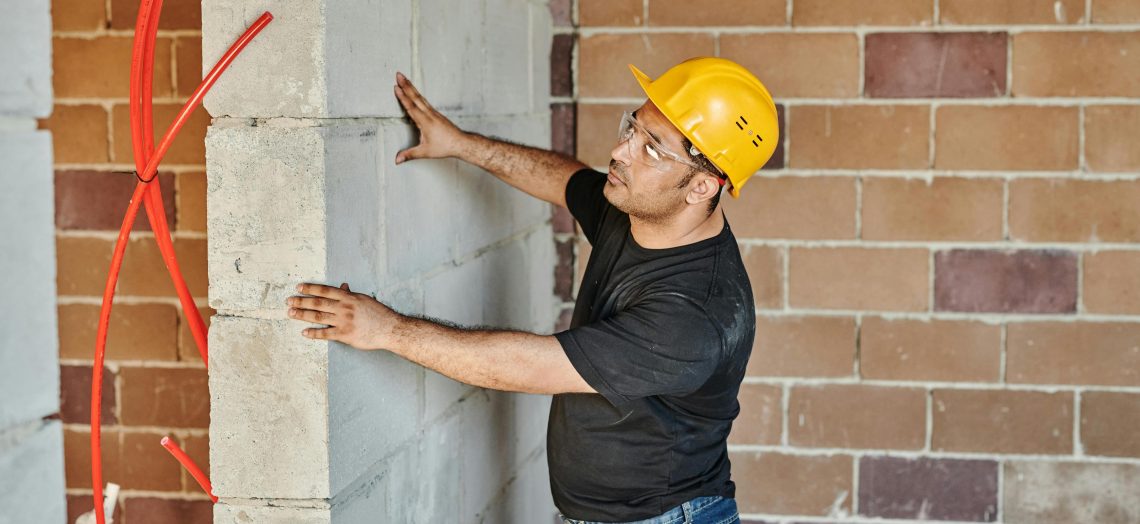Expanding or enhancing your home can elevate both lifestyle and property value. Luxury home additions offer homeowners the chance to customize their living space with high-end features, improved functionality, and aesthetic appeal. Whether you’re adding a new wing, a home theater, or a spa-inspired bathroom, thoughtful planning is crucial for a successful project.
This guide explores popular luxury home additions, design tips, and considerations to help you maximize the impact of your renovation. Incorporating a well-executed luxury home renovation can turn your property into a modern, functional, and indulgent space.
Planning Your Luxury Home Addition

Before beginning construction, thorough planning ensures a smooth and successful project. Consider the following:
- Assess Your Needs: Identify what spaces or amenities will improve daily life. Examples include an additional bedroom, expanded kitchen, or wellness-focused areas like a spa or gym.
- Set a Budget: High-end finishes and custom designs come at a premium. Factor in construction costs, design fees, permits, and contingencies.
- Evaluate Property Layout: Your addition should complement the existing architecture and avoid disrupting structural integrity.
- Hire Experienced Professionals: Architects, designers, and contractors specializing in luxury homes can ensure the addition integrates seamlessly with your property.
Tip: Start with a clear vision of your home’s style and purpose. Knowing what you want will guide design decisions, material selection, and layout planning.
Popular Luxury Home Additions
Luxury homeowners often choose additions that combine comfort, entertainment, and elegance. Here are some of the most in-demand features:
Spa Bathrooms and Master Suites
Creating a retreat-like master suite is a popular way to add luxury and value.
- Freestanding soaking tubs and walk-in rain showers
- Heated floors and towel racks for ultimate comfort
- Double vanities with high-end fixtures
- Walk-in closets with custom shelving and lighting
- Smart mirrors and integrated lighting controls
Tip: A spa-inspired master suite creates a sanctuary in your home and is a highly desirable feature for resale.
Home Theaters and Media Rooms
Luxury homeowners increasingly invest in dedicated entertainment spaces.
- Acoustic wall panels for superior sound quality
- Reclining theater seating and customizable lighting
- 4K projectors or large-screen TVs with surround sound
- Mini-bars or snack stations for added convenience
Tip: Integrating a home theater requires careful planning for wiring, soundproofing, and ventilation to maintain comfort and functionality.
Outdoor Living Spaces
Extending living areas outdoors enhances both entertainment and lifestyle.
- Covered patios or pergolas with seating and dining areas
- Outdoor kitchens with grills, sinks, and refrigerators
- Fire pits or fireplaces for ambiance
- Swimming pools, hot tubs, or infinity pools
- Landscaped gardens and water features
Tip: Outdoor additions should harmonize with the existing architecture while considering weather durability, safety, and maintenance.
Home Gyms and Wellness Areas
Fitness-focused luxury additions provide convenience and wellness benefits.
- Fully equipped gyms with cardio machines, weights, and functional training zones
- Yoga or meditation rooms with calming lighting and flooring
- Spa elements like saunas, steam rooms, or massage stations
Tip: Personal wellness spaces not only enhance lifestyle but also contribute to long-term health and property appeal.
Expanding Living Spaces and Kitchens
Open, functional spaces are essential for modern luxury homes.
- Large gourmet kitchens with islands, professional-grade appliances, and custom cabinetry
- Breakfast nooks, wet bars, or wine rooms integrated seamlessly
- Additional living or family rooms for entertaining and relaxation
- Glass walls or skylights to bring in natural light and create spaciousness
Tip: When expanding kitchens or living areas, maintain visual flow and style consistency throughout the home for a cohesive feel.
Design Considerations for Luxury Additions

When planning a high-end home addition, design is just as important as function.
Cohesive Architectural Style
- Match roofing, siding, and window styles to existing structures
- Use complementary materials and finishes for continuity
- Consider scale and proportion so the addition feels natural, not tacked-on
Lighting and Ambiance
- Layered lighting: ambient, task, and accent lights for each space
- Smart lighting systems for convenience and energy efficiency
- Skylights or floor-to-ceiling windows to enhance natural light
Technology Integration
- Smart home automation for lighting, climate, and security
- Built-in audio and video systems for seamless entertainment
- Energy-efficient systems for HVAC, appliances, and insulation
Material Quality and Finishes
- High-end flooring: hardwood, marble, or luxury vinyl
- Countertops: quartz, granite, or custom-designed surfaces
- Fixtures: designer faucets, cabinet handles, and lighting
Tip: Selecting durable, luxurious materials ensures your addition remains timeless and functional for years.
Budgeting and ROI for Luxury Additions
Luxury home additions are significant investments, but careful planning can maximize both enjoyment and return on investment (ROI). Understanding the financial implications before starting your project ensures that your money is well spent and the addition contributes to long-term property value.
Cost vs. Value
Not all additions provide the same financial return. Spa-inspired bathrooms, gourmet kitchens, and home theaters typically offer the highest ROI in luxury markets. Outdoor living spaces, such as patios with kitchens or pools, also appeal to potential buyers and can significantly increase property desirability. In contrast, overly niche or highly personalized spaces may not add as much monetary value, even if they enhance daily life.
Prioritize Essentials
Focus on additions that improve functionality, lifestyle, or entertainment while adding tangible value to your property. Examples include:
- Master suites and bathrooms: Enhancing comfort and luxury for homeowners.
- Expanded kitchens: Gourmet appliances and larger layouts improve both aesthetics and usability.
- Home theaters and media rooms: Highly desirable for modern luxury buyers.
- Outdoor entertaining areas: Patios, kitchens, and pools extend usable space.
By prioritizing these essentials, you ensure that your renovation provides both personal enjoyment and market appeal.
Plan for Maintenance
High-end materials and finishes—marble countertops, hardwood flooring, designer fixtures—often require specialized care. Regular maintenance costs should be factored into your long-term budget. For example:
- Polishing natural stone surfaces and sealing countertops
- Servicing HVAC systems in larger additions like home gyms
- Maintaining pools, hot tubs, or spa areas
Considering ongoing upkeep helps prevent unexpected costs and preserves the luxury quality of your home addition.
Financing Options
Luxury home additions can be funded through various methods, depending on your financial situation:
- Home equity loans or lines of credit: Use the equity in your property to fund renovations.
- Construction loans: Short-term loans designed specifically for home improvement projects.
- Cash funding: For those who can finance the project outright, eliminating interest and loan fees.
Choosing the right financing strategy reduces stress and allows for smooth project execution without compromising on quality.
Maximizing ROI
To maximize your investment:
- Work with architects and designers who understand high-end trends and luxury buyers.
- Avoid overly personalized features that may not appeal to a broad audience.
- Incorporate timeless finishes and durable materials that maintain their value over time.
- Consult real estate experts to identify which additions are most likely to enhance property value in your market.
Tip: Strategic planning ensures that your luxury home addition is not only a dream space but also a smart investment that delivers long-term financial and lifestyle benefits.
Timeline and Project Management
Luxury home additions require careful scheduling to avoid delays and overspending.
- Initial Planning: 2–4 weeks for design concepts and approvals
- Permits and Approvals: 1–3 months depending on local regulations
- Construction Phase: 3–12 months depending on project scope
- Interior Finishing: 1–3 months for custom cabinetry, flooring, and décor
Project Management Tips
- Hire a general contractor with experience in luxury renovations
- Maintain open communication with all subcontractors
- Schedule regular site visits to monitor progress
- Keep a contingency fund for unexpected delays or costs
Safety and Legal Considerations
Before and during construction, safety and compliance are essential.
- Obtain all required permits and inspections
- Ensure contractors follow OSHA and local safety regulations
- Use licensed electricians, plumbers, and HVAC professionals
- Implement proper insurance coverage for the duration of the project
Tip: Legal compliance protects your investment and prevents costly fines or renovation interruptions.
Final Thoughts
Luxury home additions offer the opportunity to elevate lifestyle, enhance functionality, and increase property value. From spa-inspired bathrooms and home theaters to outdoor living spaces and home gyms, these projects require thoughtful planning, quality materials, and professional execution. By combining style, comfort, and modern technology, your home can achieve a high-end look and feel tailored to your needs.
Whether renovating for personal enjoyment or resale potential, a strategic luxury addition ensures long-term satisfaction and timeless appeal. Incorporating elements from a luxury home renovation sets the stage for both comfort and lasting value.
